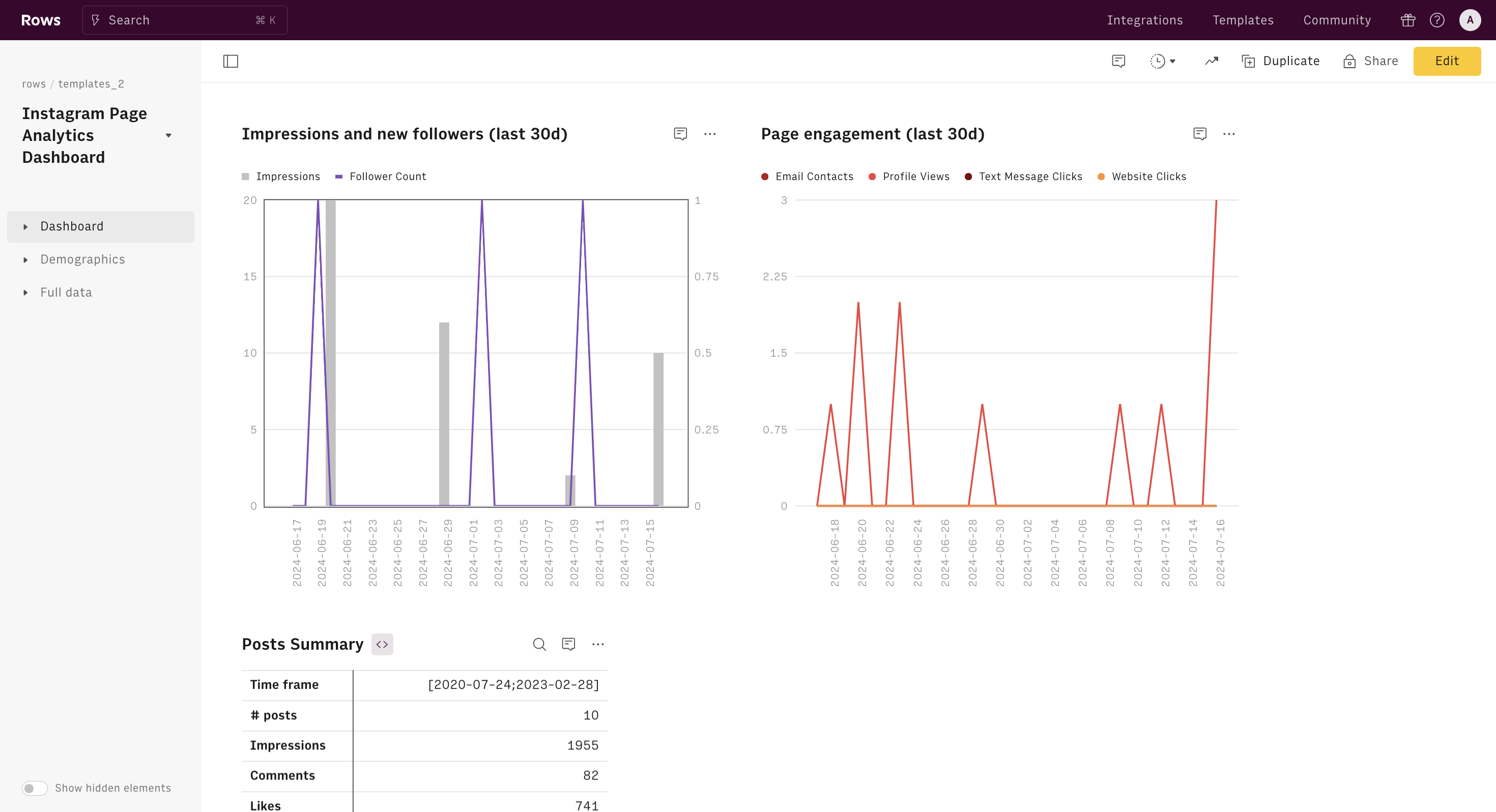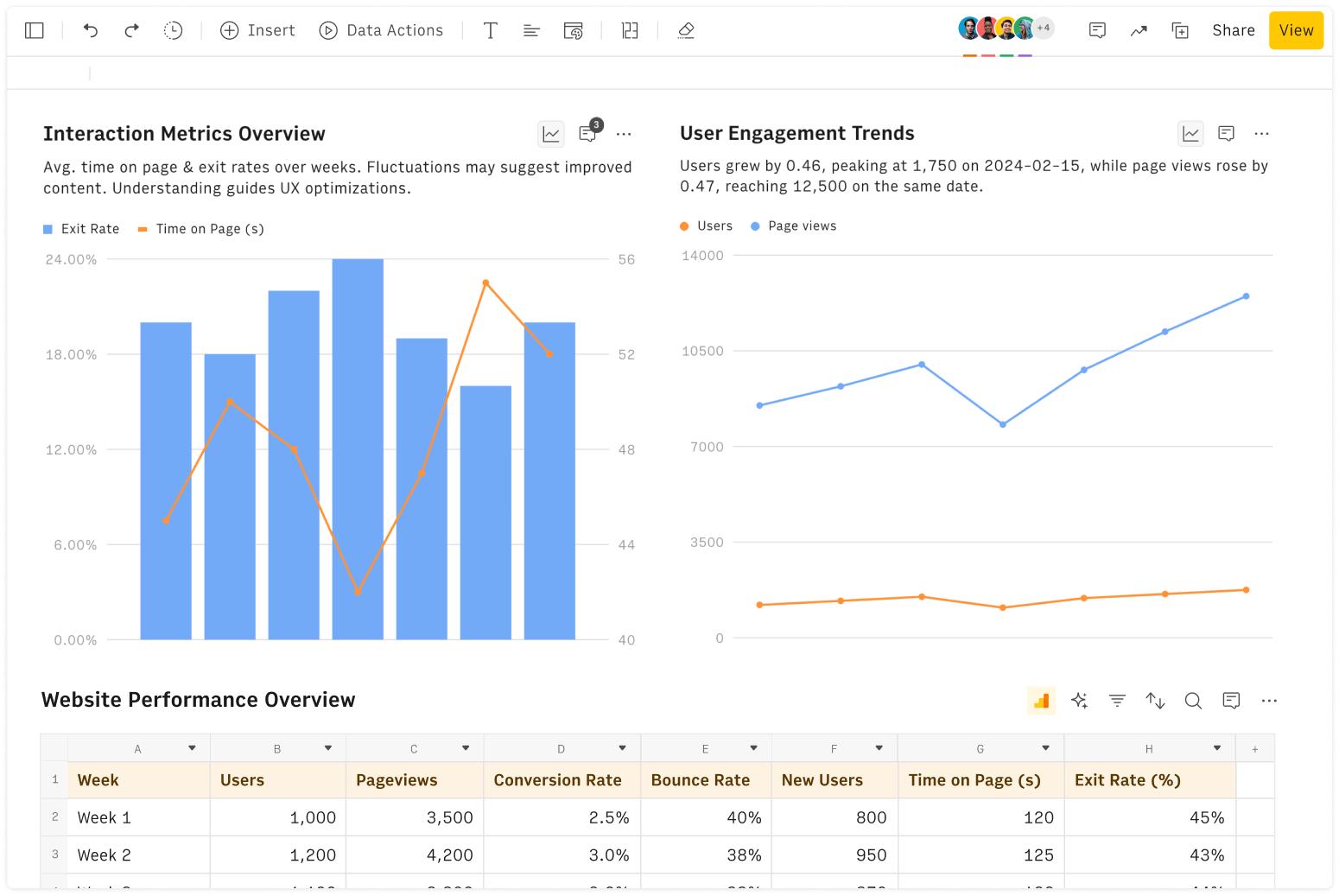What is a Unix Timestamp / Epoch time?
A Unix timestamp, also known as an "epoch time", represents the number of seconds that have elapsed since January 1, 1970, at 00:00:00 UTC, excluding leap seconds.
This starting point is referred to as the Unix "epoch". The Unix timestamp provides a simple numeric representation of a date and time that is universally recognized across different platforms, making it a standard method for time measurement in computing.
How to Use the Unix Timestamp Converter
This Epoch Unix timestamp converter lets you convert unix time online. Simply input the Unix timestamp number into the converter and press Enter.
The tool will use Rows' UNIX2DATE proprietary function to convert from unix timestamp, automatically displaying the corresponding date and time in a human-readable format, "YYYY-MM-DD". This allows you to easily understand or verify the date and time that a particular timestamp refers to.
Alternatively, in the Date to Unix Timestamp Converter, input a human-readable date format, such as "YYYY-MM-DD" (or "DD/MM/YYY"). The tool will use the inverse function, UNIXTIME, to return the Epoch timestamp.
Common Uses of Converter Unix Time
Unix timestamp converter are widely used in programming and database management for various practical purposes. Here are some specific use cases:
Recording Events: timestamps are used to record the time when events occur, such as user logins, transactions, or system errors.
Data Synchronization: ensuring that data remains consistent across different systems or networks often relies on Unix timestamps to track when data was last updated.
File Management: operating systems use Unix timestamps to record creation, modification, and access times of files.
Session Management: web applications use timestamps to manage user sessions, typically determining session expiry.
Time Series Analysis: in analytics, timestamps serve to organize and analyze data points based on the sequence and duration of events.
Understanding these uses can help developers and administrators utilize Unix timestamps effectively in their respective applications and systems.
Advantages and Uses of Timestamp Formats
Unix timestamps are often represented as either 32-bit or 64-bit integers, depending on the system, making them a compact format ideal for applications that need to store timestamps in a small amount of memory.
This is particularly useful in programming languages such as PHP, Python, and JavaScript. Conversely, ISO time strings, being more human-readable, are advantageous for exchanging date and time information between systems and regions due to their standardized format.
Troubleshooting Errors for Unix Epoch Converter
If you encounter an error during conversion with this Unix Epoch Converter, ensure that the Unix timestamp is correctly formatted as a numerical value and falls within a valid range. Errors can occur if the timestamp is too large or small, representing a date outside the valid Unix time range that starts from 1970-01-01.
By understanding and utilizing these different timestamp formats and conversion tools, developers and administrators can better manage and synchronize time-related data across various systems and applications.
Understanding Different Timestamp Formats
In addition to Unix timestamps, there are other commonly used timestamp formats, such as epoch time and ISO time strings. Epoch time, also referred to as Unix time or POSIX time, is essentially the same as a Unix timestamp, representing the number of seconds since the Unix epoch.
However, an ISO time string follows the ISO 8601 standard, represented in a human-readable format like "YYYY-MM-DDTHH:MM:SS" and can include time zone information. This standardized format is widely used for exchanging date and time information between different systems and regions due to its international recognition and ease of parsing.
How to Convert Unix Timestamp to datetime in each programming languages
Language | Syntax |
|---|---|
PHP | date(output format, epoch); Output format example: 'r' = RFC 2822 date |
Python | import time; time.strftime("%a, %d %b %Y %H:%M:%S +0000", time.localtime(epoch)) Replace time.localtime with time.gmtime for GMT time. Or using datetime: import datetime; datetime.datetime.utcfromtimestamp(epoch).replace(tzinfo=datetime.timezone.utc) |
Ruby | Time.at(epoch) |
Java | String date = new java.text.SimpleDateFormat("MM/dd/yyyy HH:mm:ss").format(new java.util.Date (epoch*1000)); Epoch in seconds, remove '*1000' for milliseconds. |
Lua | datestring = os.date([format[,epoch]]) |
VBScript/ASP | DateAdd("s", epoch, "01/01/1970 00:00:00") |
AutoIT | _DateAdd("s", $EpochSeconds , "1970/01/01 00:00:00") |
Delphi | myString := DateTimeToStr(UnixToDateTime(Epoch)); Where Epoch is a signed integer. |
C | ts = *localtime(&rawtime); strftime(buf, sizeof(buf), "%a %Y-%m-%d %H:%M:%S %Z", &ts); printf("%s<br/>", buf); |
Objective-C | NSDate * myDate = [NSDate dateWithTimeIntervalSince1970:epoch]; NSLog(@"%@", date); |
R | as.POSIXct(epoch, origin="1970-01-01", tz="GMT") |
Go | Example code |
Adobe ColdFusion | DateAdd("s",epoch,"1/1/1970"); |
MySQL | FROM_UNIXTIME(epoch, optional output format) Default output format is YYY-MM-DD HH:MM:SS. If you need support for negative timestamps: DATE_FORMAT(DATE_ADD(FROM_UNIXTIME(0), interval -315619200 second),"%Y-%m-%d") (replace -315619200 with epoch) |
PostgreSQL | PostgreSQL version 8.1 and higher: SELECT to_timestamp(epoch); Older versions: SELECT TIMESTAMP WITH TIME ZONE 'epoch' + epoch * INTERVAL '1 second'; |
SQLite | SELECT datetime(epoch_to_convert, 'unixepoch'); or local timezone: SELECT datetime(epoch_to_convert, 'unixepoch', 'localtime'); |
Oracle PL/SQL | SELECT to_date('01-JAN-1970','dd-mon-yyyy')+(1526357743/60/60/24) from dual Replace 1526357743 with epoch. |
SQL Server | DATEADD(s, epoch, '1970-01-01 00:00:00') |
IBM Informix | SELECT dbinfo('utc_to_datetime',epoch) FROM sysmaster:sysdual; |
Microsoft Excel / LibreOffice Calc | (A1 / 86400) + 25569 Format the result cell for date/time, the result will be in GMT time (A1 is the cell with the epoch number). For other time zones: =((A1 +/- time zone adjustment) / 86400) + 25569. |
Crystal Reports | DateAdd("s", {EpochTimeStampField}-14400, #1/1/1970 00:00:00#) -14400 used for Eastern Standard Time. |
JavaScript | var myDate = new Date( your epoch date *1000); document.write(myDate.toGMTString()+"-------"+myDate.toLocaleString()); |
Tcl/Tk | clock format 1325376000 For More Tcl/Tk snippets |
MATLAB | datestr(719529+TimeInSeconds/86400,'dd-mmm-yyyy HH:MM:SS') |
IBM PureData System for Analytics | select 996673954::int4::abstime::timestamp; |
Unix/Linux Shell | date -d @1520000000 Replace 1520000000 with your epoch, needs recent version of 'date'. Replace '-d' with '-ud' for GMT/UTC time. |
Mac OS X | date -j -r 1520000000 |
PowerShell | Function get-epochDate ($epochDate) { [timezone]::CurrentTimeZone.ToLocalTime(([datetime]'1/1/1970').AddSeconds($epochDate)) } then use: get-epochDate 1520000000. Works for Windows PowerShell v1 and v2 |
Other OS's | Command line: perl -e "print scalar(localtime(epoch))" (If Perl is installed) Replace 'localtime' with 'gmtime' for GMT/UTC time. |
How to get the UNIX Time (epoch time) in each programming languages
Language | Syntax |
|---|---|
PHP | time() |
Python | import time; time.time() |
Ruby | Time.now (or Time.new). To display the epoch: Time.now.to_i |
Perl | time |
Java | long epoch = System.currentTimeMillis()/1000; Returns epoch in seconds. |
C# | DateTimeOffset.Now.ToUnixTimeSeconds() (.NET Framework 4.6+/.NET Core), older versions: var epoch = (DateTime.UtcNow - new DateTime(1970, 1, 1, 0, 0, 0, DateTimeKind.Utc)).TotalSeconds; |
Objective-C | [[NSDate date] timeIntervalSince1970]; (returns double) or NSString *currentTimestamp = [NSString stringWithFormat:@"%f", [[NSDate date] timeIntervalSince1970]]; |
C++11 | double now = std::chrono::duration_cast<std::chrono::seconds>(std::chrono::system_clock::now().time_since_epoch()).count(); |
Lua | epoch = os.time([date]) |
VBScript/ASP | Now() |
AutoIT | _DateDiff('s', "1970/01/01 00:00:00", _NowCalc()) |
Delphi | Epoch := DateTimetoUnix(Now); Tested in Delphi 2010. |
R | as.numeric(Sys.time()) |
Erlang/OTP | int(parseDateTime(datetime).getTime()/1000); (version 18+), older versions: calendar:datetime_to_gregorian_seconds(calendar:universal_time())-719528*24*3600. |
MySQL | SELECT unix_timestamp(now()) |
PostgreSQL | SELECT extract(epoch FROM now()); |
SQLite | SELECT strftime('%s', 'now'); |
SQL Server | SELECT DATEDIFF(s, '1970-01-01 00:00:00', GETUTCDATE()) |
Oracle PL/SQL | SELECT (CAST(SYS_EXTRACT_UTC(SYSTIMESTAMP) AS DATE) - TO_DATE('01/01/1970','DD/MM/YYYY')) * 24 * 60 * 60 FROM DUAL; |
IBM Informix | SELECT dbinfo('utc_current') FROM sysmaster:sysdual; |
JavaScript | Math.floor(new Date().getTime()/1000.0) The getTime method returns the time in milliseconds. |
Visual FoxPro | DATETIME() - {^1970/01/01 00:00:00} Warning: time zones not handled correctly |
Go | time.Now().Unix() |
Adobe ColdFusion | <cfset epochTime = left(getTickcount(), 10)> |
Tcl/Tk | clock seconds |
Unix/Linux Shell | date +%s |
Solaris | /usr/bin/nawk 'BEGIN {print srand()}' Solaris doesn't support date +%s, but the default seed value for nawk's random-number generator is the number of seconds since the epoch. |
PowerShell | [int][double]::Parse((Get-Date (get-date).touniversaltime() -UFormat %s)) |
Other OS's | Command line: perl -e "print time" (If Perl is installed on your system) |







